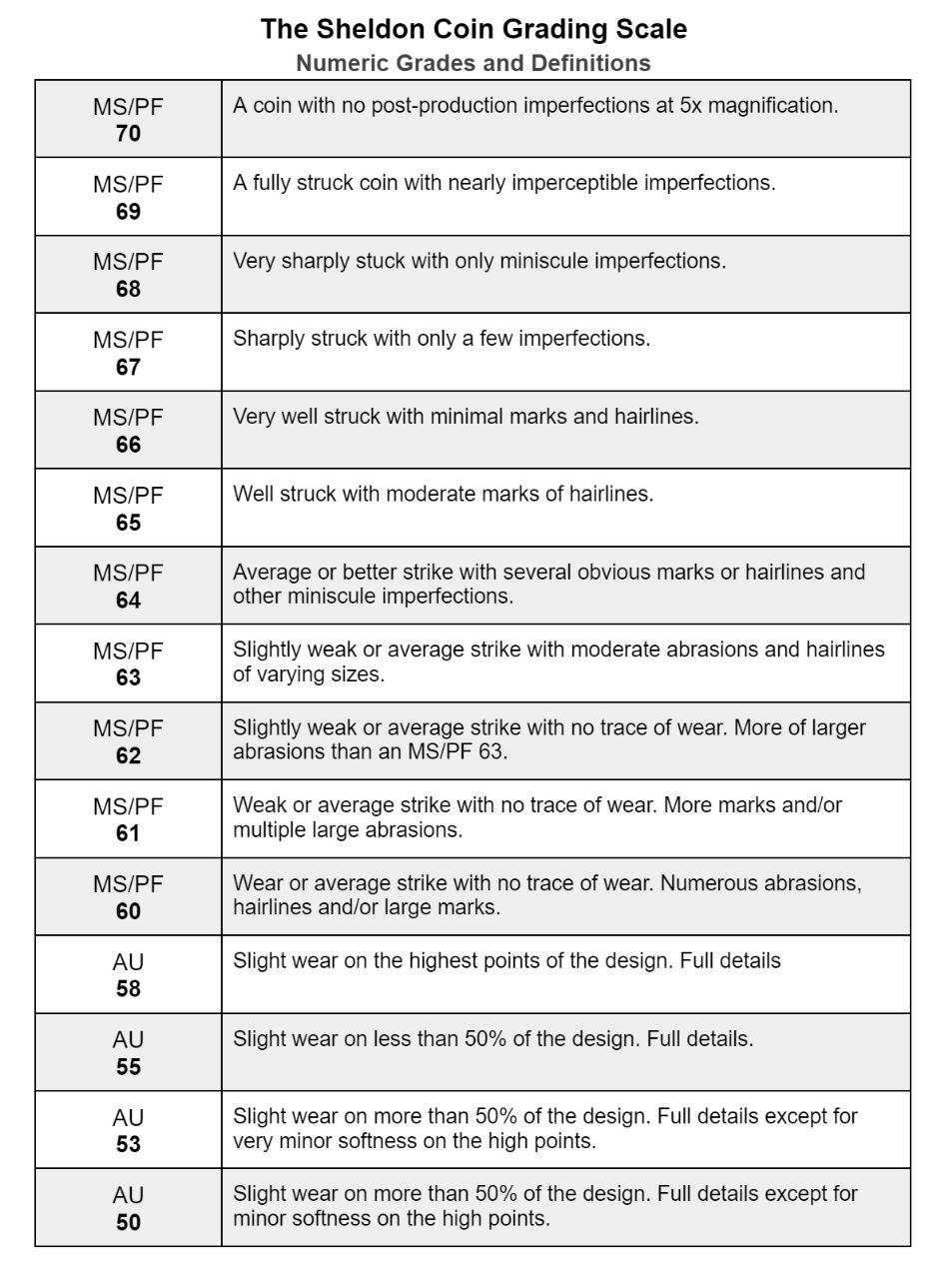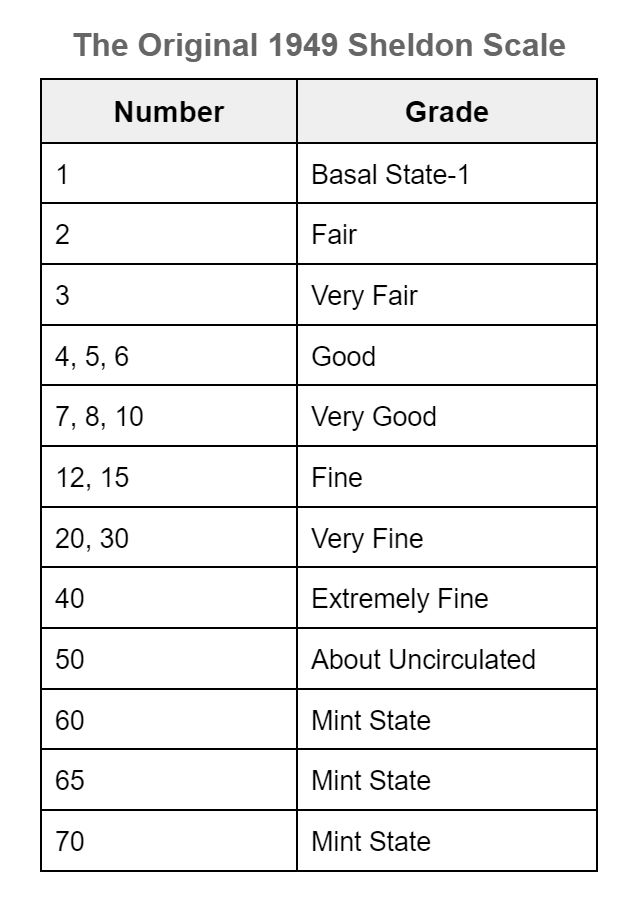
Poor to Mint State: The Sheldon Scale
Category: Determining Collectability
For collectors, investors, and history enthusiasts, coins hold a unique allure. They are a valuable piece of history, a window to a bygone era or far-away place. And when a particularly interesting coin finds its way into our hands, we want to know what it's worth. Enter the Sheldon Scale.
What is the Sheldon Coin Grading Scale?
Known by many in the numismatic world as simply “the Sheldon Scale”, the Sheldon Coin Grading Scale is one of the most widely-adopted grading systems used to evaluate the condition and value of coins.
It rates each coin based on an established set of criteria and provides a common framework for collectors, dealers, and investors to use. The scale is especially useful for buyers, helping them to make a more informed decision knowing the condition and quality of the coin they want to purchase.
Prominent third-party grading and authentication companies such as the Numismatic Guaranty Company (NGC) and the Professional Coin Grading Service (PCGS) use the Sheldon Scale.
The Grading System
The scale ranges from 1 to 70, with each number representing a coin grade. A 70-grade coin is considered to be the pinnacle of preservation and quality. It is perfect in its condition—uncirculated, extremely fine, and exhibiting no wear or flaws. These mint state coins also retain their original luster and sharpness, often fetching a high price in the market.
Coins that exhibit wear, damage, or corrosion are graded lower on the scale, with grade 1 denoting extremely poor condition. While many people would instinctively gravitate towards mint state coins, lower-grade coins are not without their own appeal.
The signs of wear, circulation, and even the presence of intriguing errors on a coin can render it all the more desirable. These imperfections sometimes offer a profound connection to the coin's past, allowing us to glimpse the narrative of its journey and the vital role it played in commerce and society.


How are coins evaluated?
Coins are typically evaluated by experienced numismatists or professional coin grading services such as the PCGS and NGC.
Some of the variables that coin graders consider are:
- Luster
- Mint state
- Rarity
- Contact marks
- Eye appeal
- Strike quality
- Wear
- Major features
Although the Sheldon Scale provides helpful guidelines for standardization, factors such as strike quality, luster, and wear can be open to interpretation. Specific parts of a coin, for instance, may also affect a coin's value. Because of this, coin grading is considered more of an art than an exact science.
This is why it’s important for a coin grader to possess extensive knowledge and expertise. They must also be well-versed in the nuances of different coin minting techniques, series, and historical contexts.
Here is an example of how a coin may be assessed by a professional coin grader using the Sheldon Scale:
- Examination of the obverse and reverse
- Inspection of wear and preservation
- Grading criteria comparison
- Grade assignment
- Documentation
- Encapsulation
How the Sheldon Scale Was Founded
The original scale was created by a psychologist and numismatist named Dr. William Herbert Sheldon in 1949. He was fascinated by a series of early American large cents and wanted to have a way to assess and categorize their condition.
William Sheldon’s original scale brought much-needed structure to coin grading. But it lacked specificity. There was not enough granularity to differentiate coins with slight differences in condition, and there were no standard guidelines for graders to follow. By 1953, many in the numismatic community had considered the scale outdated.

As you may have observed from the table above, the lack of descriptive notes made assessments largely subjective to a grader’s interpretation. This often caused confusion when coins were graded by different sources.
The original Sheldon Scale had its shortcomings, but it’s also worth noting that it marked an important step forward in the field of coin grading, laying the foundation for its improvement and ongoing development.
Today, grading services use an adapted version of Sheldon’s original scale. The original guiding principles remain largely intact, with newer versions having evolved to take into account other factors such as different minting techniques, coin characteristics, and market demand.
Why Is the Sheldon Scale so Important?
During the late 1800s and early 1900s, numismatists realized that coins with a higher state of preservation should have a higher value on the market. But without a standardized system, it was difficult for dealers, buyers, and collectors to communicate the condition of a coin, much less its value in the market.
With the introduction of the Sheldon Scale, there was a significant improvement in market transparency and consistency. Not only did it help address the problem of overpricing and undervaluation, but it also instilled confidence and trust between collectors and buyers through the use of a shared grading standard.


